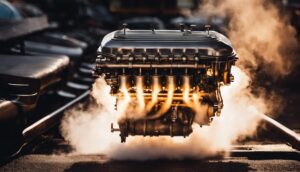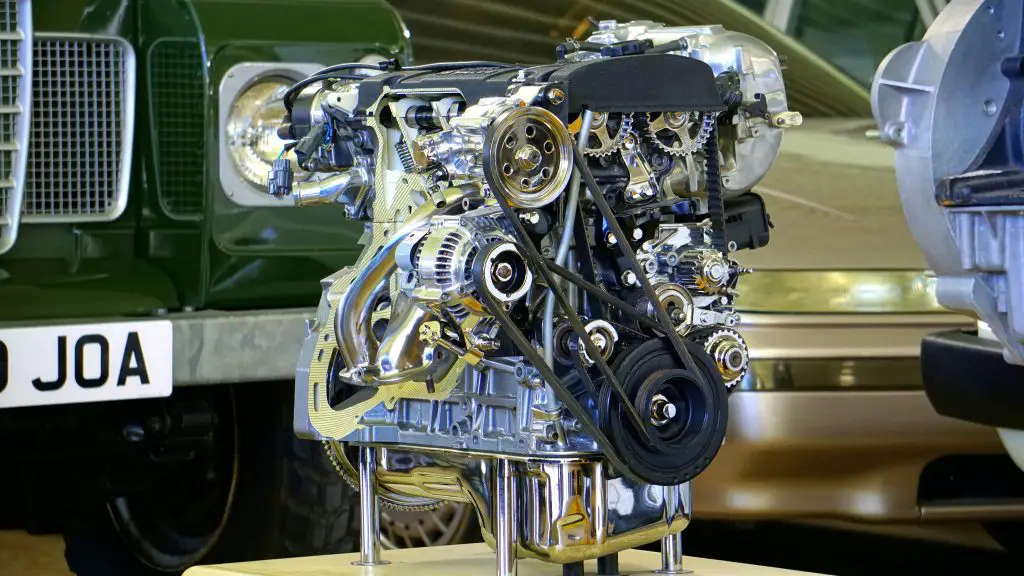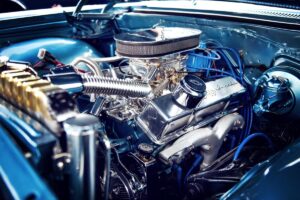The GM/Chevy 6.2L EcoTec3 is a member of the Gen5 small block engine design called the EcoTec3. It first made its debut in 2014 with the engine code L86, and a subsequent version called the L87 launched in 2019.
It is regarded as one of the most powerful engines as it combines fuel efficiency, power, and eco-friendliness. It is built by General Motors for pickup trucks and SUVs. You will find them on cars like the Chevy Silverado, GMC Yukon Denali and Cadillac Escalade to name a few.

Specification
The 6.2L EcoTec3 is an aluminum-made engine featuring 8 cylinders. To each cylinder, two valves are assigned, making it a total of 16 valves. It utilizes the direct fuel injection system known for improving fuel efficiency. While some models use active fuel management, others use the dynamic fuel management system with an overhead valve (OHV) configuration.
Inside the engine is a forged steel crankshaft, I-beam powder metal connecting rods, and cast aluminum domed pistons carefully engineered for direct injection. It also features a jet squirter, a variable displacement oil pump, and a nodular main bearing cover. All of which further enhance fuel economy and engine durability.
When mated to a 2WD, it delivers an impressive 15 mpg for city, 21 for highway and 17 for city and highway combined. And when fitted to a 4WD, expect 14/20/13 mpg for city, highway, and city/high way combined. The naturally aspirated engine features a 90-degree aluminum cylinder block with cast iron cylinder liners and can house 6.2 liters of fuel and 8.45 quarts of oil.
The 6.2L EcoTec3 V8 engine is mostly mated to an 8 or 10-speed automatic transmission, outputting sufficient horsepower of 420 hp and 460 ft-lb of torque. Its strongest lineup has a maximum towing capacity of 13,400 pounds.
Here is a quick view of the specs:
|
Manufacturer |
General Motors |
|
Assembly site |
Towanda engine plant, New York, USA |
|
Production years |
2014-date |
|
Main material |
Cast aluminum |
|
Displacement |
6.2 litres |
|
Fuel type |
Gasoline (premium) |
|
Fuel system |
Direct injection |
|
Aspiration |
Four-stroke or atmospheric naturally aspirated |
|
No of cylinders |
8 |
|
Valves |
16 ( 2 per cylinder) |
|
Valve train |
Overhead valve, variable valve timing |
|
Engine orientation |
Longitudinal |
|
Oil Capacity |
8.45 quartz |
|
Oil change interval |
7500 miles or 1 year |
|
Torque |
460 lb-ft |
|
Horsepower |
420 hp |
|
Versions |
L86, L87 |
|
Applications |
Chevy ( Silverado, Tahoe, and Suburban) GMC (Yukon, Sierra, Yukon XL, Yukon Denali, Denali XL) Cadillac (Escalade, Escalade ESV) |
Engine problems
A user said,
Really no cons to the 6.2L
This is further citing more power as one of its pros compared to the 5.3L.
However, despite its power and reliability, the 6.2L has suffered some setbacks you should be aware of. The problems include carbon build-up, lifter collapse, transmission, and other minor issues.
Carbon build
Carbon build-up is an issue with engines with direct injection, so it’s not something peculiar with the 6.2L EcoTec3. Generally, in a direct injection engine, oil blow by goes directly into the cylinder, building and remaining inside the valves and tube.
However, unlike the standard port injection system that pumps fuel into the intake port, cleaning the valves, the direct injection system shoves fuel directly into the combustion chamber. Because this method doesn’t allow fuel cleaning the intake ports, gunk builds up and stays there.
With an increase in gunk comes a decrease in the air the port can hold, invariably reducing the amount of air in the engine. This ultimately leads to performance issues such as misfires, reduced acceleration, poor idling, etc.
The easiest way to avoid carbon build is to install a catch can to help trap unused oil. If, however, your engine is already suffering from it, you can clean it using the walnut blasting method. It’s typical to start noticing symptoms around 75k miles.
Lifter collapse issue
Some GM 6.2L uses the active fuel management system, a system that deactivates certain cylinders in specific conditions to enhance fuel economy and reduce emission, using an array of complex lifters. Particularly, the lifters work by deactivating the camshaft from the cylinders.
However, these lifters can collapse, causing the pushrods to bend. The collapsing or bending of the push rod results in cylinders opening and closing inappropriately. Invariably leading to a series of performance and drivability issues. According to users, the surest way to avoid lifter issues will be the deactivation of the AFM.
A8 transmission issue
Most 6.2L EcoTec3 mated to the 8-speed auto transmission were reportedly problematic. A Hull truth user said,
The Motor is ok, but the 8 speed is a piece of shit.
This was also accompanied by other negative reviews. But what exactly was the issue with the 6.2L 8 speed auto transmission?
Users reportedly complained of vibration or transmission jerking during shifts, resulting in drivability issues. The rough shifts are often noticeable when shifting from first to second or second to first gear.
The issue was only attended to after a class action lawsuit was filed. According to Chevy, the A8 transmission issue stems from the moisture content of the transmission fluid used in the factory.
A great way to fix this will be to do a fluid flush and filter replacement. If this doesn’t suffice, you may need to replace the torque converter. However, the 8 speed transmission has now been phased out with the 10 speed trans in use.
Now? The 10 speed transmission is standard in most cars with the GM 6.2L EcoTec3.

Other issues
Other recorded issues include fuel injector and pump issues, engine mount failure, manifold bolts, and intake manifold issues.
Benefits
Some advantages that come with using the 6.2L EcoTec3 V8 include:
Durability
The 6.2L EcoTec3 is built with strong and reliable components; this not only helps reduce repair cost but also enhances longevity.
Peak performance
When paired with the 10-speed automatic transmission, the use of a dynamic fuel system DFM allows for more power to take on most demanding tasks without compromising fuel economy.
Great fuel economy
The use of the direct injection systems, shoving fuel directly into the engine allow for better efficiency and performance.
Amazing towing capabilities
A user said,
My 6.2 is fun, my towing has been about 8000 lbs and 6.2 doesn’t flinch.
This isn’t surprising though. The engine outputs an impressive 460 lb ft of torque and 420 horsepower, making it a powerhouse with great strength and capacity to tow without fuss.
Conclusion
The GM/Chevy 6.2L EcoTec3 is a powerful, reliable engine that enhances both fuel efficiency and environmental friendliness. Power is impressively sufficient, but you can opt for a tune-up if you want more boost.
However, you need to understand that there are setbacks with the engine; some models were reportedly problematic. That said, if you want engine durability, keep up with maintenance. Use only the recommended fuel and change oil at the recommended intervals. And if you take good care of it and schedule regular maintenance, the 6.2L can go beyond 250k miles.

While growing up, I knew I had a thing for car repairs though my parents never wanted me to learn mechanics. I always visit a mechanic garage in my small neighborhood after school. As I grew older, at age 16, I got addicted to anything automotive. My parents had to enroll me in that mechanic garage since giving up was never an option for me. As a dedicated mechanic who got into the industry from an early age, I’m graced with an addiction to diagnosing and rectifying automotive problems with ease.




